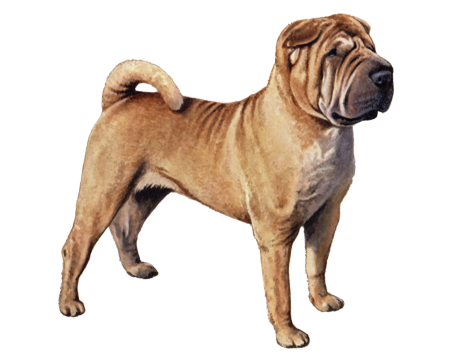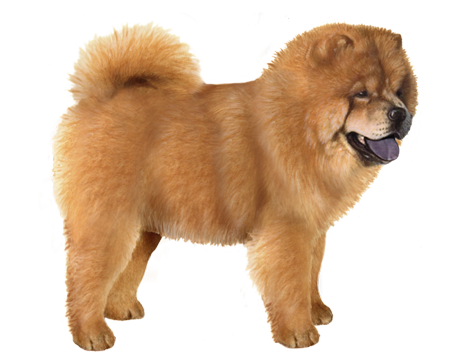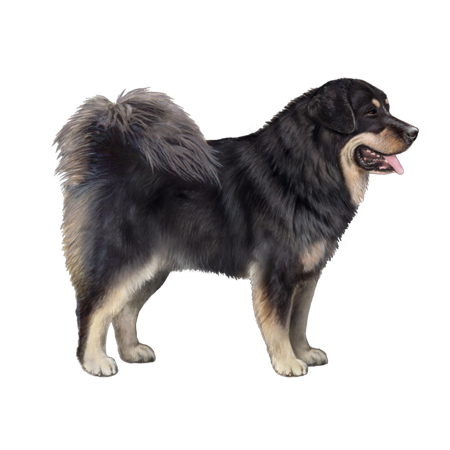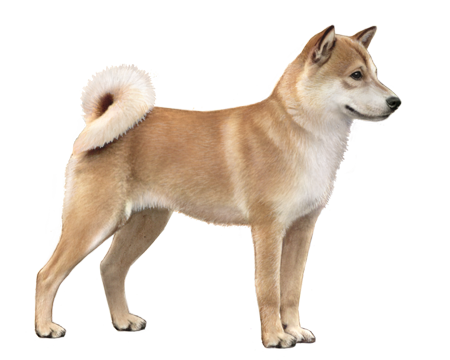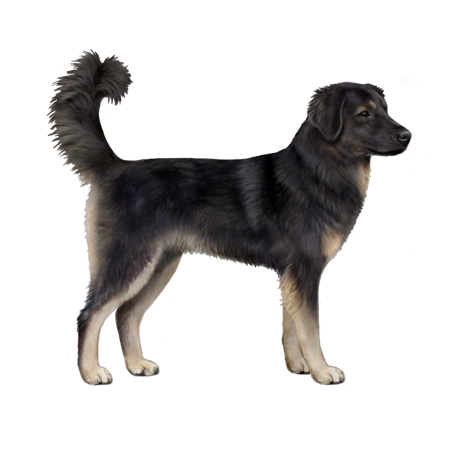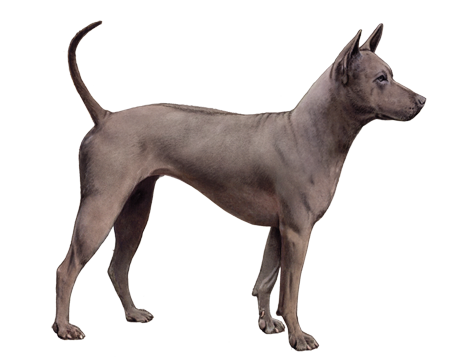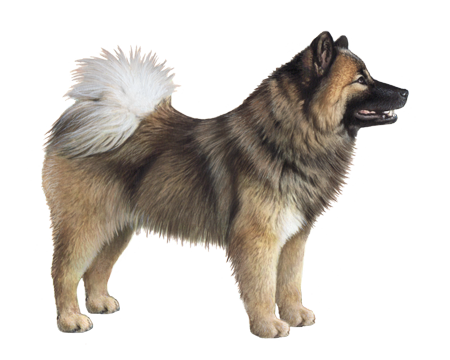
Eurasier
The Eurasier is a fun-loving family dog. Calm, even-tempered, and affectionate, they desire close connections with their people. And this breed's playful, easygoing nature also makes it a good companion for children.
Interested in discovering if your dog is an Eurasier?
Check out Wisdom Panel's DNA tests.

Eurasier Traits
General Appearance
A medium-sized dog, the Eurasier has a thick coat and erect ears.
Coat and Coloring
Eurasiers have medium-length coats with thick undercoats. And they can be many colors. But the most common are black, fawn, red, sable, and gray.
Pure white and irregular white patches are not permitted in the breed standards. Black markings—including face masks or reverse face masks—are common.
Distinctive Physical Traits
One of the more unusual traits of Eurasiers is their purple, pink, or spotted tongues.
Eurasier Temperament
Self-assured, calm, and even-tempered, Eurasiers are devoted to their owners and thrive on affection and attention. In fact, nothing would make them happier than living in a household where someone is home all day. They should never be chained up outside or left alone.
This breed is great with children—especially when raised in a family setting—and other dogs. Eurasiers can be wary of strangers, but they aren't aggressive and don't make good guard dogs.


Eurasier History
The Eurasier is a relatively new breed. In 1960, a German breeder named Julius Wipfel aimed to create a canine that was as adaptable as a wolf but as good-natured and social as a family dog.
Wipfel began by crossing a Chow Chow and Wolfspitz to create the Wolf-Chow. And in 1972, he mixed the Wolf-Chow with the Samoyed, yielding the Eurasier.
Though the breed is well-known in Germany and other parts of Europe, it remains rare in the United States.
Eurasier Care
Nutrition
Eurasiers require a high-quality, age-appropriate dog food–whether it's commercially manufactured or homemade (with a veterinarian's supervision and approval). These dogs are known to be picky eaters. Offering a variety of different foods can help prevent your dog from getting bored and refusing to eat.
Grooming
This breed's shaggy coat needs regular grooming. Expect to brush your Eurasier at least once a week, and be sure to check for matted fur. Frequent grooming can help remove dead hair.
Eurasiers that have been spayed or neutered tend to have thicker, longer coats that require additional maintenance. Twice a year, Eurasiera shed their undercoats. Daily brushing during these seasonal periods is key.
Trimming nails, cleaning ears, and brushing teeth should also be part of your Eurasier's grooming routine.
Exercise
In the home, Eurasiers can be couch potatoes—curling up alongside their people for long naps. But these dogs still need regular exercise. They love long walks, swimming, and canine sports—such as agility, flyball, rally, and competitive obedience. Well-trained Eurasiers often behave off-leash, making them perfect tagalongs for hikes and other outdoor adventures.
With good-natured personalities and love for other dogs, Eurasiers are a great breed to take to the dog park or drop off at daycare. And because they don't have extreme exercise needs, Eurasiers are well-suited for apartment living.
Training
Training an eager-to-please breed like the Eurasier is a breeze. Though sometimes independent, Eurasiers have a strong desire for praise and affection. Plus, they love to learn new things and follow commands.
The Eurasier can be a bit sensitive, and harsh corrections will undermine trust. So, positive reinforcement and rewards-based training are best for this breed. Early socialization with other people and dogs is also key to promoting their easygoing, social nature.

Eurasier Genetic Health Conditions
-
Cerebellar Hypoplasia
Cerebellar Hypoplasia (CH) causes difficulty controlling bodily movements (ataxia). The severity of the ataxia can vary between affected dogs and does not worsen with age.
Knowing if your Eurasier is a carrier or at-risk for these conditions can help you and your veterinarian plan for your pup’s lifelong care. With Wisdom Panel™ Premium, you can get results for over 200 genetic health tests.
Breed Group
Asian and Oceanian
The Asian and Oceanian group is comprised of breeds whose origins lie in Asia, which have spread as far as Australia, the islands of the Pacific, and the Arctic. This group is possibly the most ancient of all breed groups and were bred for a variety of purposes, including guarding, hunting, and as draft dogs.
Resources
https://www.akc.org/dog-breeds/eurasier/
http://www.vetstreet.com/dogs/eurasier#upper-tabs
http://www.fci.be/Nomenclature/Standards/291g05-en.pdf
Reviewed July 26, 2020 by Cindy Elston, DVM, MPH





